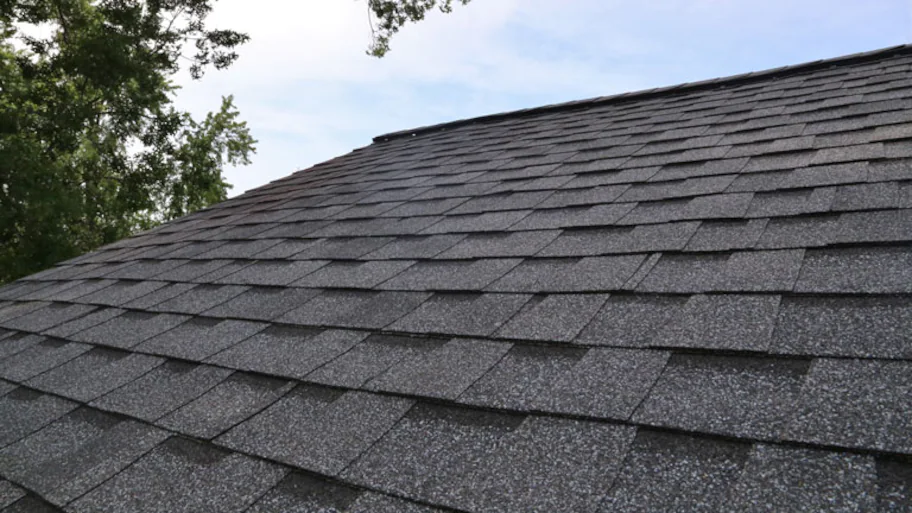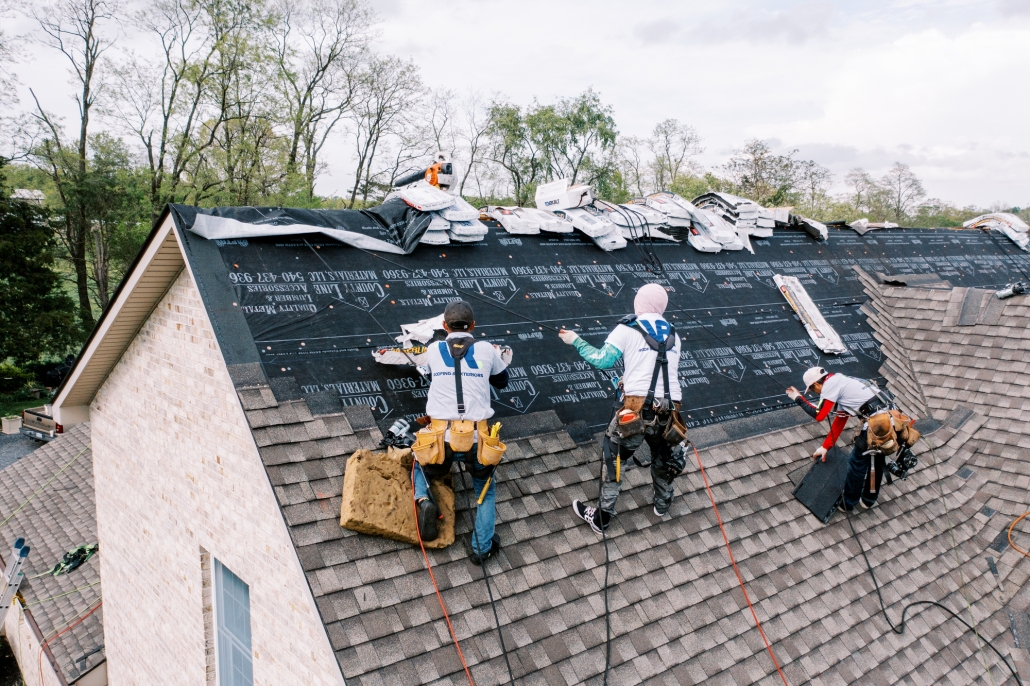Best Practices for Ensuring Proper Roof Covering Air Flow
Guaranteeing proper roof air flow is critical for the long life and effectiveness of a roof covering system. A balanced consumption and exhaust vent ratio, frequently 1:300, plays a crucial role, with consumption vents ideally placed at the lower side of the roofing for great air entrance and exhaust vents at the optimal for cozy air leave. Regular evaluations to identify obstructions and keep clear airflow are paramount. Keeping insulation away from vents is essential to prevent air flow constraint. Recognizing these fundamental aspects establishes the phase for more thorough understandings into installation and upkeep practices that can considerably boost your roof's performance.
Understand Ventilation Fundamentals
Appropriately comprehending ventilation essentials is crucial for making certain the longevity and efficiency of roofing systems. Reliable ventilation minimizes wetness build-up and temperature level extremes in the attic room, both of which can lead to significant architectural damage with time. A well-ventilated roofing system aids in avoiding typical concerns such as mold development, timber rot, and ice dams, which can compromise the honesty of the roof products and the underlying frameworks.
The main goal of ventilation is to facilitate the motion of air, permitting a consistent exchange in between the interior and exterior environments. This balance is accomplished through a combination of intake and exhaust vents that collaborate to maintain optimum air movement. Intake vents, commonly located along the eaves or soffits, permit fresh air to go into the attic room area, while exhaust vents, frequently located at or near the roof covering ridge, make it possible for hot, humid air to escape.
Trick aspects influencing the efficiency of roofing system ventilation include appropriate positioning, sufficient sizing, and making certain that both consumption and exhaust vents are unblocked. Normal assessment and maintenance are important to identify potential obstructions, damage, or inefficiencies in the air flow system, consequently protecting the roofing system's performance and resilience.
Kinds of Roof Covering Vents
Roofing vents play a crucial function in keeping reliable attic air flow and, by extension, the overall health and wellness of the roof covering system. Numerous kinds of roofing system vents are offered, each with unique benefits tailored to certain roof requirements. Ridge vents, as an example, are set up along the roof covering's peak, permitting cozy, humid air to run away from the attic. They offer continuous ventilation and blend flawlessly with the roofline, making them both effective and aesthetically pleasing.

Soffit vents are installed under the eaves and job in tandem with roofing vents to make certain a balanced intake and exhaust system. By permitting cooler air to get in from below, soffit vents help with the expulsion of hot air with upper vents. Gable vents, located on the exterior wall surfaces of the attic, offer an additional effective option, specifically in homes with saddleback roofs.
Examine Your Existing Ventilation

Following, think about the age and condition of your roof materials and air flow components. Older systems may not conform with existing building codes or may have deteriorated gradually, minimizing their efficiency. Conduct a complete examination to recognize any indicators of deterioration, such as rust, damage, or gaps that might endanger the system's efficiency.
Additionally, measure the attic room temperature level and humidity degrees. High temperature levels and moisture can show inadequate ventilation - gainesville fl roofing companies. Make use of a hygrometer and thermometer to obtain accurate analyses, contrasting them with exterior conditions. Relentless disparities recommend possible concerns that require resolving.
Setup Best Practices
Efficient setup of roofing ventilation systems is extremely important for making sure optimal efficiency and durability. Appropriate installation begins with understanding the particular ventilation demands of the roofing system and the structure it covers. This involves calculating the appropriate ratio of consumption to wear down vents, generally adhering to the 1:300 guideline, which stipulates one square foot of air flow for each 300 square feet of attic flooring area.

The placement of vents is just as important. Consumption vents should be installed at the roof's lower side, typically in the soffits, to allow cool air to get in. Exhaust vents, on the other hand, should be installed near or at the roof covering's peak to assist in the departure of cozy, damp air. This develops an all-natural air flow that aids maintain temperature level and dampness balance within the attic room room.
Seal all vent connections diligently to avoid air leaks and possible water seepage. Use premium products and adhere to supplier standards to make sure resilience and efficiency. Furthermore, incorporating ridge vents with baffles can significantly improve airflow efficiency check my reference by preventing wind-driven rainfall and snow from entering the attic.
Inevitably, specific installation of roofing ventilation systems minimizes possible issues such as mold development, ice dams, and architectural damage, guaranteeing the roof covering's integrity and the structure's total wellness.
Routine Upkeep Tips
Uniformity in maintenance techniques is essential to ensuring the long-term performance of roof covering ventilation systems. Throughout these assessments, ensure that vents are cost-free of particles, nests, and various other blockages that might hamper air flow.
Cleaning the vents is an additional important task. Utilize a soft brush or a vacuum to get rid of dirt and particles from intake and exhaust vents. Beware not to damage the vent displays or louvers during the process. In addition, check the attic area for any indications of water damage, which can compromise the stability of the roof.
Appropriate insulation is equally essential. Make certain that attic room insulation does not block the vents, as this can badly restrict air movement. Reposition or replace it to maintain an efficient barrier. if any kind of insulation has actually changed or worked out.
Lastly, change any kind of harmed or missing elements promptly. Broken vents, cracked shingles, or tatty flashing can all contribute to inadequate ventilation and should be dealt with immediately. Normal maintenance guarantees that the roof covering air flow system functions efficiently, consequently extending the life expectancy of the roof covering itself.
Final Thought
Making certain proper roof covering air flow is extremely important for keeping the effectiveness and longevity of a roof. Adherence to the 1:300 consumption and exhaust vent ratio, coupled with the strategic positioning of vents, is vital. Regular biannual inspections, particles cleansing, and ensuring next page insulation does not like it block airflow are essential methods. Implementing these finest practices will certainly cultivate a well-ventilated roof, thus reducing possible issues connected to moisture build-up and excessive heat, inevitably lengthening the roofing's life expectancy.
A balanced intake and exhaust vent ratio, commonly 1:300, plays a pivotal duty, with intake vents ideally positioned at the lower edge of the roof covering for amazing air access and exhaust vents at the optimal for warm air exit. Intake vents, generally situated along the soffits or eaves, enable fresh air to enter the attic space, while exhaust vents, frequently positioned at or near the roofing system ridge, make it possible for warm, moist air to run away.
Soffit vents are installed under the eaves and job in tandem with roof covering vents to ensure a well balanced intake and exhaust system. By allowing cooler air to get in from below, soffit vents promote the expulsion of warm air with top vents. Adherence to the 1:300 consumption and exhaust vent proportion, paired with the tactical placement of vents, is vital.